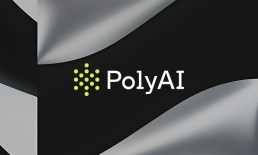Finding good, qualified and reasonably priced daycare in the U.S. is a challenge — particularly in expensive urban areas and remote rural areas. In 31 states and the District of Columbia the average cost of childcare for a year outstrips the cost of tuition at a state university.
And even for parents willing to pay the price, finding a daycare to take their money can even be difficult. Zoe Hanson, a San Francisco-area single-mother profiled by Time Magazine for her struggles in navigating the so-called “daycare gap,” has a story that is extreme-sounding, and yet eerily familiar to anyone who has ever gone on the hunt for good childcare services. A Google search in her area for daycare yielded three results, all nearly prohibitively expensive and all completely full with waiting lists stretching into the hundreds. Widening her search to the greater San Francisco areas didn’t help — for every daycare she found in her price range, she found a waiting list that stretched until her 1-year-old’s likely graduation from college.
“No one had any openings,” she told the magazine, and no matter where she looked in her new suburb she ran headfirst into the same issue: “6,000 kids for only 3,000 daycare spots.”
And while Hanson is suffering unusually difficult conditions around affordability and access that plague many Bay Area residents across a host of areas, the child care conundrum in some form or other tends to negatively affect parents nationwide. Colorado only has licensed facilities to meet the needs of 25 percent of the state’s children, while in Minnesota the state’s most populous three counties have seen the number of in-home childcare providers decline by 17 percent over the last five years.
It was a problem that New Jersey mom Jen Greenspan hit when she and her husband were expecting their first child, Olivia, and were looking for daycare as they split their time between their jobs, old home and new home under construction. As trying to find space for her daughter became a bigger and more onerous part of her life, two things became apparent to Greenspan.
“As a new mom, I realized that finding childcare can be a full-time job. I also realized that most child care centers aren’t filled to capacity every day,” she said. That unused capacity should be usable, she thought, but there was no easy way for parents like her to tap into it.
Advertisement: Scroll to Continue
“I thought, why are there on-demand apps for seemingly everything, but not daycare? So I set out to create a platform that would safely and easily connect parents in need of childcare with childcare centers that have open spots,” Greenspan told NJMom.com
That platform is now called Yaycare — and it is designed to make childcare on demand a reality for parents. The concept, according to its CEO, is “OpenTable for children.” The app works by allowing parents to log in and see what childcare locations, backup care and camp locations are available — some even same day (for the true emergency situation). All providers on the platform are licensed childcare providers and vetted by the site. They are also fairly well-known names, as partners with Yaycare include Lightbridge Academy, Kiddie Academy, Kinderprep and Superkids.
Parents can then book on the site for as much (or as little) time as they need. And, the service is free until such time as a payment for the childcare placement is made and paid for. Yaycare makes its money by taking a cut of the booking fee.
That free component is important. There are other digital and app-based services out there to help parents more easily navigate the slog that can be booking childcare — but they tend to be concierge services focused on more affluent consumers. Services like Kid Care Concierge or Chicago’s Daycare Discover will provide parents with a childcare personal assistant who will take on the challenge of finding and gaining a seat in a desirable local preschool — but they are fee-based programs that tends to start in the $150 to $250 range, depending on what types of specific services a family is looking for.
Yaycare by design is meant to be accessible and useful to a wider range of parents — and to present greater flexibility in managing those needs.
Today Yaycare is small — very small — serving parents in New Jersey’s Union County only. But according to Greenspan, the response has been “overwhelmingly positive” from both daycare providers and parents and the plan is to be online in the entire state of New Jersey by the end of 2019. From there? Nationwide has a nice ring to it — though the goal is to expand sustainably instead of incredibly quickly. The platform believes no matter where it goes, Yaycare will find demand, and Greenspan noted the goal is to make sure it can fully meet the demand before it launches anywhere.
“I’m creating a product that will make parents’ lives easier and hopefully transform the childcare landscape,” she said.



